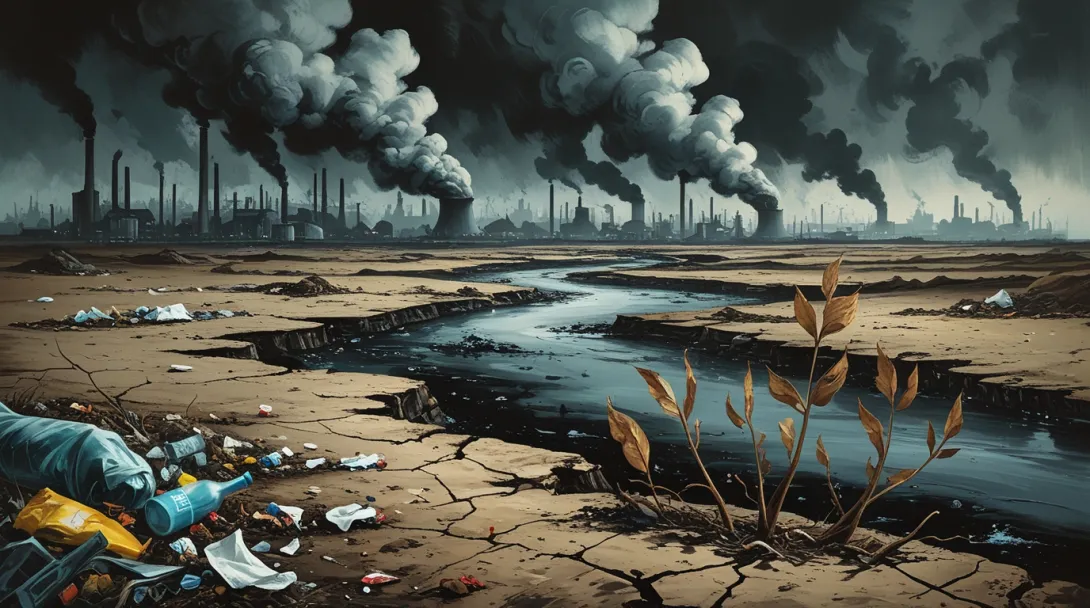
1. Pollution
Pollution is the contamination of the environment by harmful substances, affecting air, water, and soil.
A. Air Pollution
- Caused by the release of toxic gases (CO₂, SO₂, NO₂, CFCs) into the atmosphere.
- Main sources: industries, vehicles, burning fossil fuels.
- Leads to respiratory diseases, acid rain, and global warming.
- Major pollutants: Particulate Matter (PM2.5, PM10), carbon monoxide, sulfur oxides.
- Controlled by pollution control devices, cleaner fuels, afforestation.
B. Water Pollution
- Contamination of water bodies by industrial waste, sewage, pesticides, plastics.
- Causes waterborne diseases (cholera, typhoid, dysentery).
- Major pollutants: heavy metals (mercury, lead), oil spills, nitrates, phosphates.
- Results in eutrophication (algal blooms reducing oxygen levels).
- Prevention: water treatment, reducing chemical waste, strict regulations.
C. Soil Pollution
- Caused by excessive use of fertilizers, pesticides, industrial waste dumping.
- Reduces soil fertility and contaminates food chains.
- Major pollutants: pesticides, heavy metals, plastics, radioactive waste.
- Leads to desertification, loss of arable land, groundwater contamination.
- Solutions: organic farming, crop rotation, afforestation.
2. Deforestation
- The large-scale clearing of forests for agriculture, urbanization, and industries.
- Leads to habitat destruction, soil erosion, loss of biodiversity.
- Major causes: logging, slash-and-burn farming, infrastructure development.
- Reduces carbon sequestration, contributing to climate change.
- Prevention: reforestation, sustainable logging, conservation programs.
3. Global Warming
- The gradual increase in Earth's average temperature due to greenhouse gases (GHGs).
- Main GHGs: CO₂, CH₄ (methane), N₂O, CFCs.
- Caused by fossil fuel combustion, deforestation, industrial emissions.
- Effects: melting glaciers, rising sea levels, extreme weather, biodiversity loss.
- Solutions: renewable energy, afforestation, carbon footprint reduction.
4. Ozone Depletion
- The thinning of the ozone layer due to the release of chlorofluorocarbons (CFCs).
- The ozone layer protects against harmful UV radiation.
- Major sources: refrigerants, aerosol sprays, industrial solvents.
- Effects: skin cancer, cataracts, reduced crop yield.
- International efforts: Montreal Protocol (1987) to ban CFCs.
5. Conclusion
- Pollution, deforestation, global warming, and ozone depletion are major environmental threats.
- Urgent action is needed for sustainable development and conservation.
- Government policies, public awareness, and technological advancements can help reduce environmental damage.
